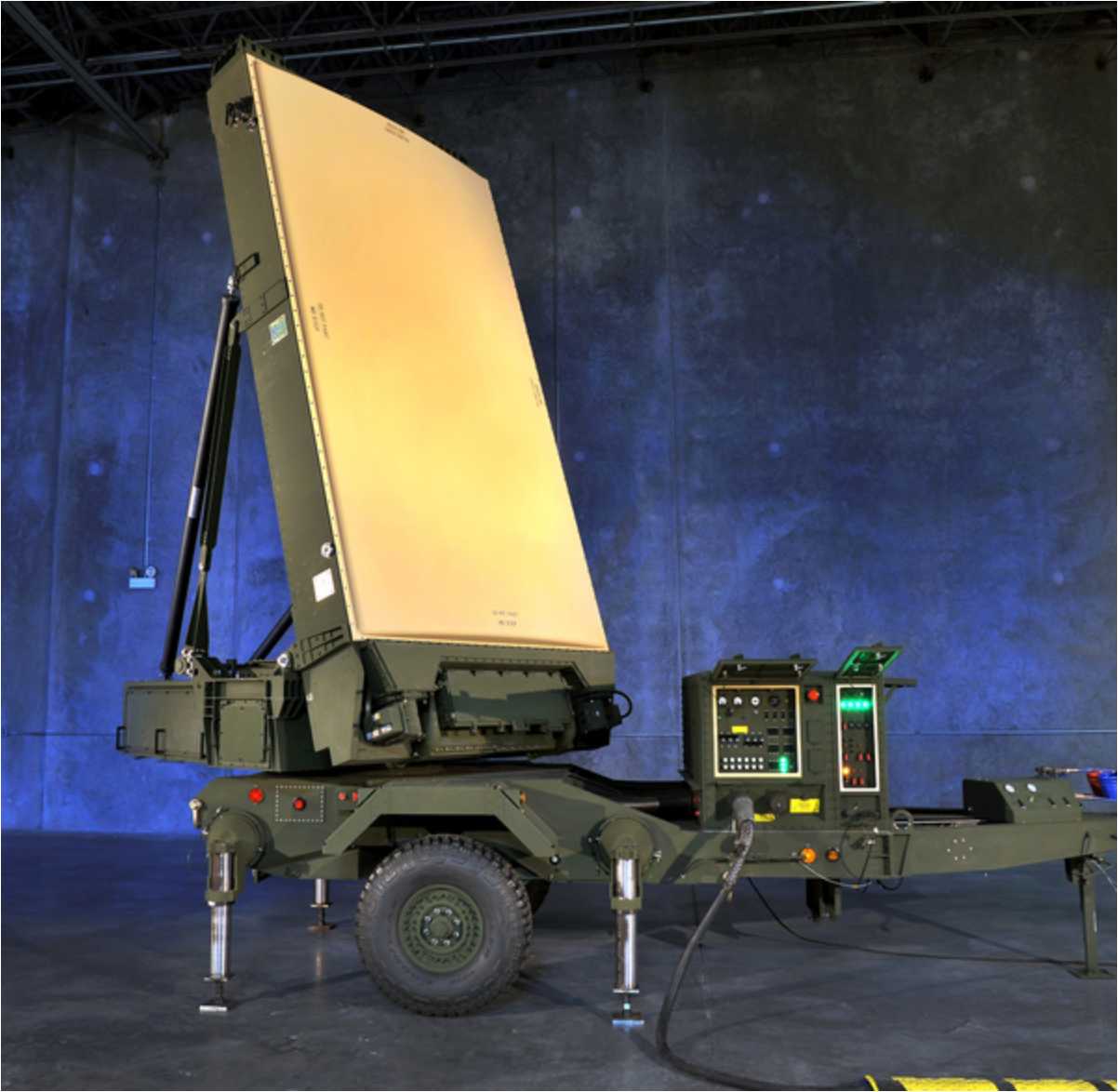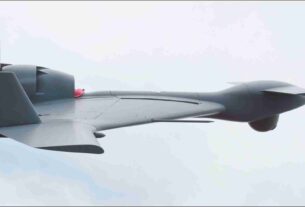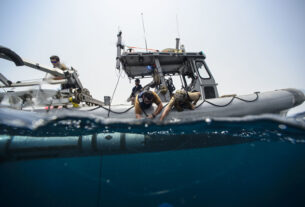Future of radar technology in warfareSince the technological parameters are fast changing, the radar systems are making lot of changes where it is being combined with advanced materials, solid-state modules, digital signal processors, and complex A-D converters that can give a better look to military and civilian users who need the best possible capability in small, compact, and efficient packages.
Radar – short for radio direction and ranging – has been with us for nearly seven decades, when British systems designers first deployed this technology to give the Royal Air Force early warning of Nazi bombers crossing the channel to attack cities and towns in England.
In those days a radar contact was just a blip on the screen; it did not offer information on the size or type of the contact, and provided only rudimentary information on the contact’s speed and direction.
It is almost impossible to understate the value and importance of radar to the Allied effort during World War II in terms of being a real game changer.
Put simply, radar may have been the decisive factor in the British victory in the Battle of Britain in the spring of 1940.
Today’s radar technology is every bit as decisive as it was during the Battle of Britain, yet it is worlds away from the large, tube-based, mechanically steered, relatively low-frequency systems that once stood as electronic sentinels along the English coast.
Modern radar systems often have imaging capability, can yield digitized signals quickly and easily for use with graphical overlays, can be networked together so the total system is greater than the sum of its parts, and can serve several different functions, such as wide-area search, target tracking, fire control, and weather monitoring, where previous generations of radar technology required separate systems to do the same jobs.
Most important, however, is the relative ease and speed with which modern analog radar signals can be converted to digital information.
Not only does this open a wide variety of signal processing options, but it also enables radar information to be made available in real time or near real time on Internet-type networks for inclusion in the digital battlefield and Global Information Grid visions of the future.
Radar works essentially by bouncing radio waves off a target and detecting the return signals. “Radar systems as early as World War II were simple, but were state-of-the-art for that time,” says Mark Russell, vice president of engineering for integrated defense systems at Raytheon.
Those early radar systems were tube based and mechanically steered, and involved RF transmitters, RF receivers, analog signal processing, and a video display.
Later, radar systems improved in sensitivity to where they could virtually detect and monitor waves on the ocean and insects in the air.
Increasing sensitivity, however, compounded one of the biggest challenges that radar systems confront so-called clutter, or reflected signals from objects that are not of interest. In World War II when radar technology was not nearly as sensitive as it is today, this was not a big problem. Large objects showed up as blips, while relatively small things of no interest didn’t show up at all.
Increasingly sensitive radar systems were able to detect wave action on the ocean’s surface, but they could have difficulty trying to find an enemy periscope in a rough ocean.
Radar designers originally dealt with the clutter problem by finely tuning transmitted RF signals to match the return signals of targets of interest as closely as possible.
Engineers tune transmit signals by altering the size of transmit antenna modules. Finely tuning transmitted signals for targets of interest has helped reject clutter, but can make radar systems useful only for a narrow range of applications.
Hence, users needed a separate radar system for wide-area surveillance, target tracking, fire control, and weather monitoring.
“It has come from a simple concept that there was one radar per function,” Russell explains.
“Each was tuned to its own frequency for that function. At the lower frequencies the radiating elements get bigger, and inside of those are transmitters. You can have a radar system the size of buildings, all the way up to an airborne radar that would fit on your table, yet always one radar had its own function.”
Raytheon designs radar systems that run the gamut, ranging from the huge Sea-Based X-Band (SBX) Radar that sits essentially on a mobile offshore oil rig to search for ballistic missile launches, all the way down to small panel-type radars on unmanned aerial vehicles and the active electronically scanned array (AESA) radar systems on the F/A-18 jet fighter bomber.
The first glimmer of what lay on the horizon in radar technology came with the invention of solid-state technology.
“We moved into solid-state radars with processing and RF chips, which enabled us to go to active electronically steered arrays,” Russell says.
Solid-state technology led to digital signal processing, ultrafast analog-to-digital (A-D) and digital-to-analog (D-A) converters, fast commercial off-the-shelf (COTS) microprocessors, and high-speed digital networking.
Increasingly, radar systems handle all signal processing in the digital realm, rather than in analog, which offers increasingly fast and efficient processing, broad new opportunities for offering radar information on the tactical Internet, as well as innovative new ways to display radar information.
In essence, once radar signals are converted from analog to digital, they are limited only by the state of the art in digital processing, which today is not a serious limitation at all.
“It is not a processing problem,” Russell says, explaining that new powerful generations of field-programmable gate arrays are available to process complex fast Fourier transform (FFT) algorithms on which radar processing depends.
In fact today’s latest generations of FPGAs, digital signal processors (DSPs), powerful COTS microprocessors, and multiprocessing computing architectures are enabling radar systems designers to put radar-processing algorithms written decades ago into use.
“Sometimes we can use algorithms that have been on the shelf for 50 years by applying new technology for them,” says Arlan Pool, fellow and technical director of the Mercury Computer Systems.
With such digital computing power at their command, radar systems designers can even start thinking about doing without processes like digital down-conversion, and can begin designing systems able to sample signals immediately after they are digitized.
“We can now use commercial parts for A-D converters that enable us to do direct digital sampling,” says Douglas Reep, vice president and chief engineer of the Lockheed Martin. “We are seeing a trend where we remove analog components from systems.”
“Now we can almost digitize microwave signals without the down-convert,” says Jerald Nespor, Lockheed Martin senior fellow for radar development at the company’s facility.
“We need A-D converters with sufficient sampling rates to do that. Everyone wants higher efficiency and more dynamic range, and we can do that with COTS technologies and innovative architectures.”
Improvement in radar systems, however, is not happening only on the digital side. New semiconductor materials, such as gallium arsenide (GaAs) and gallium nitride (GaN) are helping systems designers improve efficiency and shrink overall system size.
Raytheon, for example, is involved in a project with backing from the US Missile Defense Agency (MDA) called Next Generation Transmit/Receive Integrated Microwave Module—otherwise known as NGT, that seeks to use GaAs and GaN technologies for major radar systems upgrades.
As part of the program, Raytheon radar experts are demonstrating GaN-based monolithic microwave integrated circuit (MMIC) amplifiers with substantially higher RF power with greater efficiency than does current radar technology.
Raytheon is using GaN technology developed for the US Defense Advanced Research Projects Agency in Arlington, as part of the agency’s Wide Bandgap Semiconductor program.
GaN technology not only can extend radar ranges, sensitivity, and search capabilities, but also can help designers reduce the size of radar antennas, Russell says.
“The NGT program is important because it is the first significant government-funded contract to address the use of the more capable GaN semiconductors in a relevant environment,” says Steve Bernstein, the NGT program manager at Raytheon. “This recent demonstration shows that GaN technology performs better in transmit/receive modules representative of those used in modern radars.”
In addition to GaN and GaAs semiconductors, complex A-D converters (CADCs) from companies like Analog Devices Inc. in Norwood, Mass., as well as mixed-signal integrated circuits from companies like TriQuint Semiconductor Inc. in Hillsboro, Ore., also are contributing to the improvement of next-generation radar systems, says Lockheed Martin’s Nespor.
The enhanced transmit/receive and computer-processing technologies of modern radar systems also are giving rise to imaging radar systems—or those that produce high-resolution pictures from returning signals.
Signal-processing experts at Mercury are working on a technology called circular synthetic aperture radar, also known as circular SAR, or video SAR. “The processor-intense part of radar is image formation, which requires significant numbers crunching,” says Jon Lathrop, market segment director at Mercury.
A specialist in multiprocessing and other computer-intensive applications, Mercury is involved in synthetic aperture radar and ground-moving target indication, says Mercury’s Pool.
Circular SAR involves flying a specialized radar system aboard an aircraft that files around an area of interest, and builds a 3D image based on successive layers of radar data. “Going to things that are more processor intensive, such as circular SAR, is where the research is going,” Pool says.
Although imaging radar is not a new technology, until recently it involved recording volumes of radar data in the air and performing intensive processing later on the ground. “We would just let the numbers crunch and spend days analyzing it,” Lathrop says. “Today the imaging radars are doing image formation in real time. Processing time is less than aperture time, so it is nearly real-time image generation, or radar acting like a camera.”
Mercury and other signal-processing experts are using cell processors to break radar image processing tasks down into separate, manageable tasks. “SAR image formation, and the cell processor, are coming up with a tiling scheme that breaks the image down into little tiles,” Lathrop explains. “You are doing FFTs, but you have to glue stuff together. You look at the capability of the processor to handle the tile, so you keep chip count as low as possible.”
Perhaps the most important development in radar technology in recent years is the shift to multifunction radar, or systems that can perform a variety of applications with the same system. The move to solid-state radar gave the first glimpse of performing several applications with the same radar.
The kinds of active electronically steered radar arrays that solid-state technology enabled “is where you get into the transmit/receive module, and that is how we get away from the single-purpose radar,” says Raytheon’s Russell.
“It is a cost tradeoff. Our customers are looking for as much functionality as possible, for the same price or less.”
Multifunction radar systems can save on space, weight, and power by combining several stand-alone radars into one system, and also can help reduce demands for human operators by combining functions and systems.
“Today a lot of acquisitions are coming along where a given radar procurement will replace four or five radars current in the field, and that gives you a more cost-effective infrastructure,” Russell says.
The latest incarnations of the Raytheon Spy 1 and Spy 3 dual-band shipboard radar may replace as many as a dozen conventional antennas, Russell says. “You will start seeing the space, size, and weight allocated for antennas on ships shrinking, as well as their functionality increasing.”
Sophisticated and rapid processing of digitized radar signals enable systems designers essentially to slice return signals from wideband radars into two or more portions, and use the separate portions for separate applications, such as wide-area search as well as target tracking.
“A lot of weather radars look to get Doppler, yet now we have weather radars looking down below 10,000 feet in range, and can predict tornadoes that occur in the lower atmosphere,” Russell says.
Today, operators cannot look at separate portions of the return signals all at the same time, although they can switch among signal portions quickly enough so that it appears to be near real time.
As always, systems designers must determine the radar’s priorities. “You can choose to make the antenna wideband, or have multiple bands you switch in and out to design antennas and receivers with broader bandwidths,” says Raytheon’s Russell. “Those trades are what the radar engineer does today.”
Radar designers are not only seeking to improve system capability, however. In these budget-constrained days they also are looking into radar architectures designed for growth, technology insertion, and long-term sustainability.
“We are using open architectures to design for growth,” says Lockheed Martin’s Reep. “We use VME and other commercial standards at the backplane level. Software changes about as fast as the hardware, so we don’t want to get locked into proprietary software. We are using a Linux-based operating system more than we used to, and we also are using Windows NT and are moving to Vista.”
Embedded computer suppliers to Lockheed Martin and other large defense contractors also are keeping a close eye on sustainable technology. “We produce a variety of ‘shop window’ products—board-level hardware and software that is truly COTS,” says Michael Stern, product manager for access multiprocessor AXIX at GE Fanuc Intelligent Platforms Embedded Systems in Towcester, England.
GE Fanuc aims its embedded technology at medium-sized radar systems that call for multiboard embedded computers with five or six quad processors, and as many as 70 or 80 central processing units per enclosure.
Placing real-time radar information on tactical networks and viewing the data through Internet-like interfaces may open new possibilities in disseminating radar to those who need it and blending information from one radar system with another or other kinds of sensors.
“We are looking at XML techniques so that sensor information can look like a Web page,” Reep says.
This level of digitally processing and disseminating radar data could have its downside, warns Lockheed Martin’s Nespor. “Wide-open sensor apertures could be wide-open doors to bad guys. Cyber warfare must deal with this.”
Radar signal processing is one of the most demanding embedded computing applications known in deployed military and aerospace systems. Signal processing demands fall into two general categories, converting signals from analog to digital, and then back into analog, and making sense of signals once they are digitized.
“Radar signals and frequency bands are getting wider, in the hundreds of gigahertz and beyond, to provide better resolution and precision in positional tracking,” Hosking says.
“Wider-bandwidth radar signals create two burdens, digitizing that signal with A-D conversion, and the power of the signal processor that follows. You have to do the processing proportionally faster because you want to do the same kind of algorithm you did before, but at a higher bandwidth, so you need more horsepower.”
It is computer horsepower that is the operative phrase when it comes to radar signal processing. “The never-changing requirement from our radar customers is more performance,” says Ian Stalker, product marketing manager for Curtiss-Wright Controls Embedded Computing.
“It is the radar developers who are quickest to adopt the highest-performance computing capability,” Stalker says. “Radar guys are up against the highest performance and the highest risk. Effectively they have algorithms that consume an unlimited amount of compute power.”




